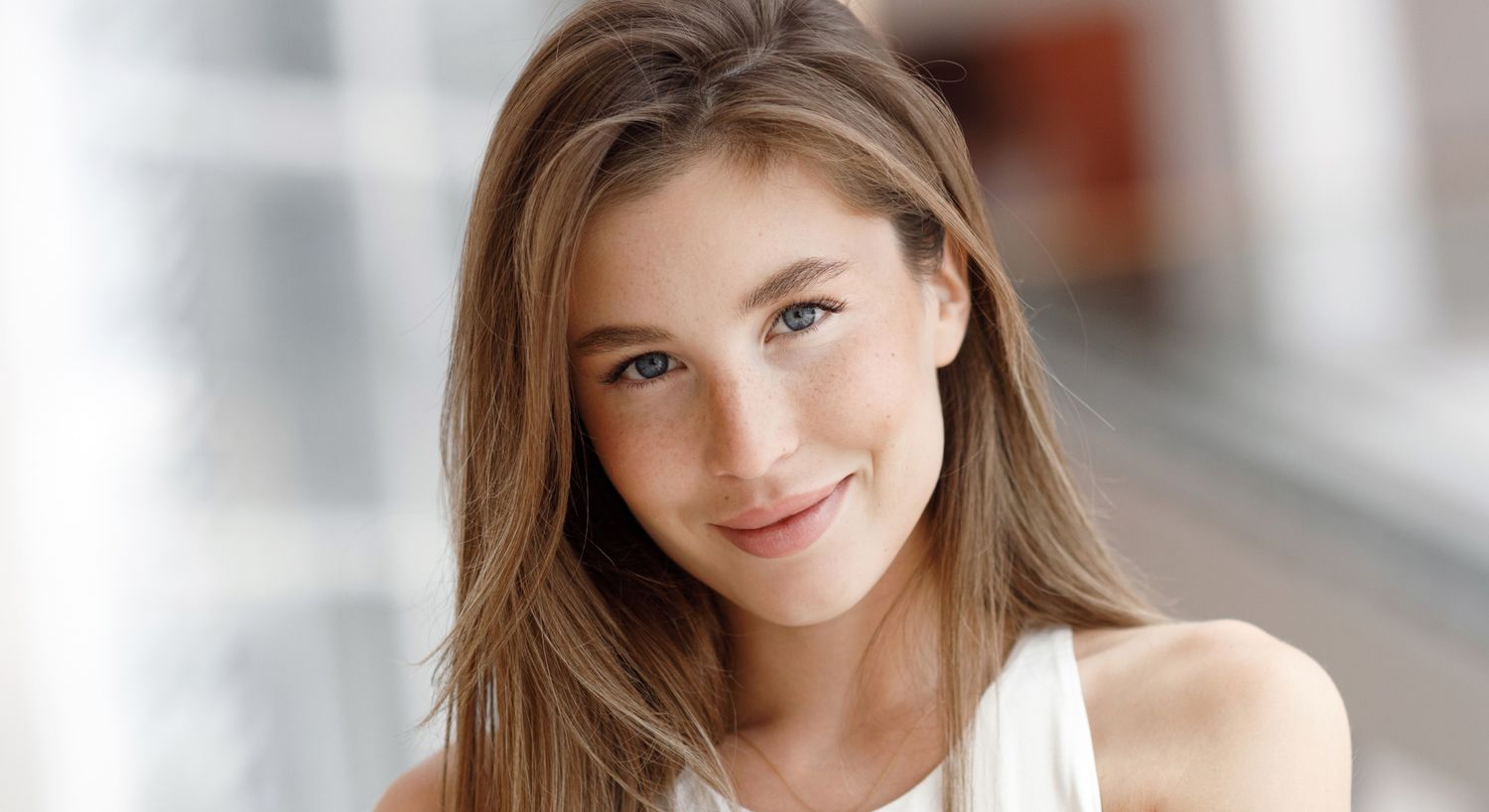
Blepharoplasty
Placeholder


Placeholder

Your eyes are a captivating focal point of your face, expressing emotions and communicating without words. As time passes, the delicate skin around the eyes is prone to the effects of aging, often showing the first signs of aging and leading to changes that may impact not only aesthetics but also functionality. At AboutFaceMD, Dr. Dadgostar specializes in blepharoplasty, also known as eyelid surgery. This precise and rejuvenating procedure targets sagging skin and puffiness, restoring youthfulness and vitality to the eyes while addressing any functional concerns like limited field of vision.
Dr. Dadgostar’s extensive experience and meticulous approach to facial plastic surgery ensure that your blepharoplasty results will be aesthetically pleasing and natural-looking.


Blepharoplasty, or eyelid surgery, is a transformative procedure crafted to address these signs of aging. By delicately removing excess skin, repositioning or removing fat deposits, and refining the contours of the eyelids, Blepharoplasty rejuvenates the eyes, restoring a refreshed and vibrant gaze.
It is important to have a consultation with a facial specialist such as Dr. Dadgostar to determine if brow lifting is also necessary to achieve your desired results as often the brow and eyelids age at the same time. Blepharoplasty and a brow lift are often combined in a single surgical session to achieve comprehensive rejuvenation of the upper face.

Blepharoplasty can be performed on the upper eyelids, lower eyelids, or both, depending on your needs and goals. During your initial consultation, Dr. Dadgostar will discuss your goals, evaluate your eyelid anatomy, and create a customized treatment plan that aligns with your desired outcome. Dr. Dadgostar’s approach is tailored to each individual’s unique anatomy, ensuring a result that not only addresses cosmetic concerns but also maintains the natural character of the eyes.
Blepharoplasty is typically conducted under local anesthetic with sedation unless it is done in combination with other facial surgery for which general anesthesia is already being used.
During upper blepharoplasty, Dr. Dadgostar employs advanced surgical techniques with meticulous precision. Discreet incisions are made along the natural creases of the upper eyelids, allowing for removal of excess skin, repositioning or removal of fat deposits, and tightening of underlying muscles. Incisions are closed with sutures which are removed 5-7 days after surgery. The resulting scar will be hidden in the natural crease of the eyelid and over time, tends to fade significantly.
Lower blepharoplasty targets the lower eyelids to address concerns such as under-eye bags, puffiness, and wrinkles. Dr. Dadgostar’s approach is meticulous, aiming for results that restore a youthful contour while preserving your natural beauty. The two main surgical methods for lower blepharoplasty are the transcutaneous (external) approach and the transconjunctival (internal) approach.
In the transcutaneous approach, a discrete incision is made just below the lower lash line. This method allows direct access to the lower eyelid tissues, including the removal or repositioning of excess skin, fat, and muscle. The transcutaneous approach is often preferred when addressing more extensive changes to the lower eyelid, such as the removal of significant amounts of excess skin or the tightening of underlying muscles.
The transconjunctival approach involves making an incision on the inside of the lower eyelid, within the conjunctiva (the mucous membrane lining the inner surface of the eyelid). This method provides access to the lower eyelid without any external incisions. The transconjunctival approach is often chosen when the primary goal is to address puffiness or bulging caused by excess fat in the lower eyelid without the need for skin excision.
The choice between these two methods depends on the specific concerns and goals of the patient. Factors such as the amount of excess skin, the presence of under-eye bags, and the need for muscle tightening influence the selection of the appropriate approach. In some cases, a combination of both approaches may be used to achieve comprehensive results, addressing multiple aspects of lower eyelid rejuvenation.
Many individuals choose to undergo both upper and lower blepharoplasty simultaneously to achieve a comprehensive rejuvenation of the eyes and surrounding areas. Surgery for the eyelids can take between 1-2 hours depending on the different components involved, and if both upper and lower eyelids are being addressed at the same time. Eyelid surgery is a day surgery where patients go home after they have recovered from anesthesia.
At our practice in Vancouver Blepharoplasty can be tailored to address several different signs of aging around the eyes:
Eyelid aging is different in different people and can include one, two, or all of these components. Surgery of the eyelids addresses each of these problems if they exist. Blepharoplasty is one of the best initial ways to improve the appearance of facial aging.

Blepharoplasty may be an option if you have:
Candidates should be in good general health and have realistic expectations for the outcome of their procedure. Dr. Dadgostar will discuss your goals and evaluate your facial anatomy to determine if blepharoplasty is right for you.
Recovery and post-operative care are crucial aspects of the blepharoplasty process to ensure optimal healing and long-lasting results. Following surgery, patients are guided through a carefully outlined recovery plan.
Blepharoplasty usually involves minimal post-operative pain and quick healing. Regular application of cold compresses to the eyes will help reduce swelling and bruising in the first 48 hours after surgery. Keeping the head elevated, even during sleep with extra pillows, can help minimize swelling. Bruising and swelling peaks at 48 hrs and will continue for 3-7 days. Patients are advised to get plenty of rest and avoid strenuous activities during the initial days of recovery.
Contact lenses should not be worn for 1 week. Sunglasses with UV protection are recommended to protect the eyes from sun exposure. In the first few days after surgery, you may experience blurry vision, excessive tearing, and dry eyes. Most symptoms and bruising resolve by one week after surgery, and work and regular daily activities can be resumed at this point.
Complete healing may take several months. Final results may become fully apparent as the tissues settle and adjust. Dr. Dadgostar provides detailed post-operative care instructions, and regular follow-up appointments are scheduled to monitor your progress.
Patients typically see initial improvements within a few weeks of surgery, with full results appearing over several months. The final outcome will reveal a more refreshed, youthful appearance, with smoother skin and enhanced contouring around the eyes. When considering blepharoplasty Vancouver patients can expect long-lasting results, enjoying their rejuvenated look for many years.


Embark on your journey to brighter, rejuvenated eyes with blepharoplasty at About Face MD. Explore our website for more information and secure your personalized consultation with Dr. Dadgostar.
No. While blepharoplasty can enhance the aesthetic appearance of your eyes, it can also improve vision by removing excess skin that may obstruct your field of view.
Most patients can resume normal activities within 1-2 weeks. However, complete healing and final results can take several months.
Dr. Dadgostar places incisions along the natural creases and folds of the eyelids, making any scars discreet and nearly invisible once they are fully healed.
Results are long-lasting, with most patients enjoying the benefits of blepharoplasty for many years. Factors such as aging and skin elasticity may eventually affect the longevity of results.